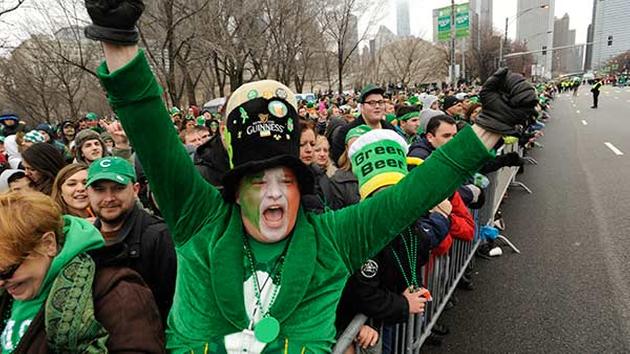St. Patty’s Day an American holiday?
U.S. parades like they own the day
St. Patrick’s Day celebrations in Ireland have evolved in recent years as a result of elaborate celebration in other countries.
The United States’ celebration of St. Patrick’s Day is very different than the celebration in Ireland, though the holiday was brought here by Irish immigrants.
Trademark aspects of the holiday in the United States include bright green clothes, rivers, and foods, as well as heavy drinking of alcohol and Shamrock Shakes from McDonald’s.
In Ireland, the primary focus of the holiday is on culture, home grown talent in the arts, and the global impact Ireland has abroad, according to native and chicago resident Emily Coakley.
In recent years, Ireland has been expanding their celebration. Though the events have not changed, the participation has increased as a result of the global celebration.
“My family and I think it became a bigger deal in Ireland because it was such a huge deal abroad,” said Coakley.
In Ireland, there is a five day festival the week of the holiday. This year, it is taking place from Mar. 15-19. It includes live music performances, a parade, and live shows that discuss Irish culture and history, among other events.
As a child, Coakley and her family would go to the St. Patrick’s Day parade at the Dublin City Centre. Children in the United States celebrate in a similar way and often go to local parades.
She noted that parades in Ireland differ from those in the United States. In Ireland, they are more focused on floats, music, singing, and dancing. She has observed more of a focus on bands, and the featuring of the fire department and police in the states.
Many of the high schools in Dublin are single sex. “It’s a great social outlet for those boys and girls starved for the company of the opposite sex,” said Coakley.
Similarly, teenagers in the United States use St. Patrick’s day as a time to be social. Many local students, such as Junior Madison Bianco and Senior Milena Srivastava plan to join a group of friends downtown for the parade.
“We are getting a group together and taking the train down for the parade. It’s a good excuse to get with a group of friends and hang out in the city,” said Bianco.
Another unique aspect of the holiday in Ireland is its emphasis on sports. There is a large European rugby tournament that is held with the final match falling on Mar. 17, so many people plan their day around it. This year, Ireland is playing England.
“It’s a huge rivalry and always generates a great atmosphere in the city,” said Coakley.
In the United States, the focus is on stereotypical Irish traits, and features alcohol, leprechauns, and the color green. Stores are full of green merchandise, and the holiday is very commercialized and treated as an excuse to celebrate without the focus on Irish culture that is present in Ireland.
According to Coakley, though, the differences are not necessarily negative.
“You guys do it bigger and better,” she said. “I remember hearing a few years ago that in Chicago they dyed the river green and I was very impressed.”
She did note that in her opinion the biggest differences are that in the United States St. Patrick’s Day is primarily seen as a drinking holiday and that it is very commercialized. In Ireland, pubs and liquor stores do not open until noon, so drinking in the morning is not as common as Americans seem to think.
She was also surprised by the St. Patrick’s day merchandise appearing in stores so early. “That would never happen in Ireland,” said Coakley.
She compared St. Patrick’s day in the United States to holidays such as Cinco de Mayo. Americans celebrate despite not knowing the origin of the holidays or their relevance in their respective countries.
Still, Coakley and her family appreciate the holiday in the United States even with the differences. Coakley loves to celebrate in both countries, and it is nice to have St. Patrick’s Day well represented in the United States.
“Everyone jumps on the bandwagon and is Irish for a day,” she said.






































